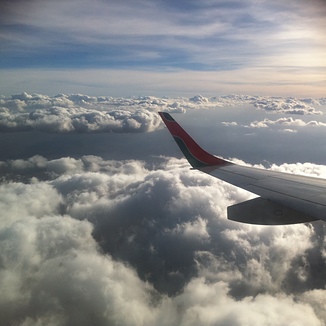Contact : +254 725 877 146
July Chill and the Realities of Climate Change
Nairobi is experiencing one of its coldest Julys in recent memory, with biting temperatures disrupting daily life, from school attendance to rising household energy costs. This unusual chill is more than just a seasonal anomaly; it’s a stark reminder of the unpredictable impacts of climate change on our health, wellbeing, and communities.
Every July, Nairobi welcomes a familiar chill. But this year, it feels different. A deeper, biting cold settles in after sunset and lingers through the morning fog. From shivering schoolchildren in oversized sweaters to adults huddled under layers, everyone agrees: Nairobi is experiencing one of its coldest Julys in recent memory.
More Than Just a Season
For decades, residents have prepared for Nairobi’s usual cold spell, typically marked by overcast skies, brisk winds, and changes in daily routines. This year, however, temperatures have dropped even lower. Nighttime lows dip below 10°C, and daytime highs rarely exceed 20°C. Many wake up to heavy fog, and the city feels wrapped in a heavy, grey blanket.
It’s not just the temperatures that have fallen, spirits have too. The usual vibrancy and color of Nairobi’s streets have faded. People are swapping bright clothes for scarves, boots, and layers of jumpers. Conversations in matatus (public transport), markets, and on social media echo the same refrain: “Hii baridi ni mingi!” (“This cold is too much!”)
Impact on Daily Life: Education and Beyond
The impact of this relentless cold is especially clear in Nairobi’s schools. Teachers in both city and peri-urban areas report a drop in attendance. Parents are keeping children home to avoid morning chills that could worsen respiratory infections. Even among those who make it to class, concentration suffers,students huddle together in cold classrooms, struggling to focus through the shivers and sniffles.
Adults feel the cold, too. Offices are quieter than usual, and widespread sniffles have become common on public transport. The gloomy weather, along with economic worries, has created a dreary atmosphere at home and work.
Rising Costs: The Hidden Price of Staying Warm
The cold is not just affecting health and morale; it’s also straining finances. To fight the chill, households are relying heavily on electricity and water supplies,boiling water for tea, porridge, and much-needed hot baths. Kettles stay warm, showers are steaming, and for many in lower-income areas, finding warmth means burning firewood, charcoal, or paraffin.
This surge in energy and fuel use brings a double impact. Utility bills rise, squeezing already tight budgets. Increased demand also puts extra pressure on the national grid, which heavily relies on hydro and thermal sources. Additionally, the use of firewood and charcoal raises indoor air pollution, worsening health issues, especially among children and women.
Coping with the Cold: Tradition Meets Necessity
With pharmacies busy and hospitals reporting more cold-related flu cases, Nairobians are turning to traditional remedies. Homemade “dawa”,a warming drink made with ginger, lemon, and sometimes honey and turmeric,is a staple in many households. Steaming with eucalyptus leaves, sipping herbal teas, and preparing hearty stews are all part of the city’s strategy against the persistent chill.
For those who can stay indoors, being active and ensuring homes are ventilated helps avoid dampness and mold. Parents are also careful to provide warm, nutritious meals and keep children engaged with reading or online learning when possible.
Is Climate Change Responsible?
With such an unusual cold snap, it’s natural to wonder if this is just a rough winter or a sign of larger changes. Climate scientists explain that climate change isn’t just about rising temperatures. It leads to greater unpredictability,intense droughts, heavy rains, and even colder spells. In Kenya, this means weather patterns are more erratic than ever, with changes in rainfall, flood risks, and temperature ranges that disrupt the familiar.
The misconception that “global warming equals more heat” is just that,a myth. In reality, a warming planet disrupts climate systems worldwide, resulting in extreme weather across the board. Nairobi’s persistent fog, harsher cold, and prolonged drizzles may indicate a stressed climate, not just a quirk of this year’s weather.
Staying Healthy in the Cold
To stay resilient in these cold weeks, consider these essentials:
– Layer Up: Several thin layers insulate better than one thick jacket. Don’t forget socks, hats, and scarves to retain body heat.
– Warm Nourishment: Hot soups, herbal teas (like dawa), and porridge are comforting and boost immunity.
– Keep Active: Moving ,even indoors helps maintain body temperature.
– Proper Ventilation: Avoid sealing off your home; air circulation prevents dampness and harmful mold.
– Monitor Vulnerable Neighbors: Check on elderly or less-equipped neighbors and share spare clothes or food.
– Prioritize Immunity: Eat fruits and vegetables; rest and seek medical help if illnesses persist.
– Support Learning at Home: If children miss school, use books or online resources to keep them learning and stay in touch with teachers.
Why Climate Action Can’t Wait
Nairobi’s cold July is a clear reminder that the effects of climate change are already here. The health, education, and economic burdens we face could grow if we ignore the need for climate action. City and county leaders must focus on climate-responsive policies: investing in better school infrastructure, supporting clean energy for households, and strengthening public health services.
On a personal level, this season calls for environmental awareness. Reducing energy waste, supporting clean energy solutions, planting trees, and educating our communities about sustainability are essential steps. Every action, no matter how small contributes to a safer, more resilient future.
As Nairobian’s bundle up under extra blankets and warm their hands on endless mugs of tea, this cold spell reminds us that it’s about more than just the weather. It’s a wake-up call to recognize our vulnerability, adjust our habits, and push for climate action that protects future generations from harsher extremes. Stay warm, stay hopeful, and remember: the fight for climate resilience starts with us, right here, right now.

